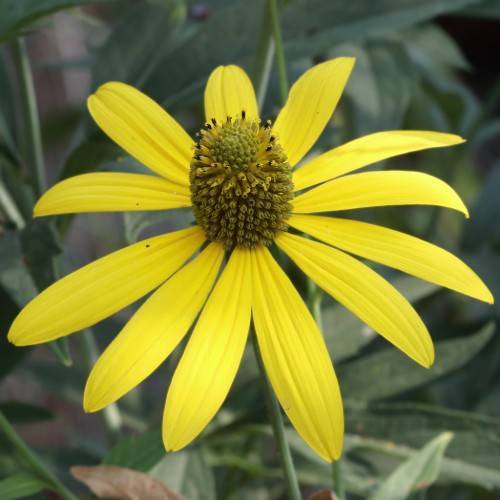
cutleaf coneflower
Rudbeckia laciniata
Cycle:
Herbaceous Perennial
Watering:
Frequent
Hardiness Zone:
3 - 9
Flowers:
Flowers
Sun:
Full sun Partial sun Shade
Soil:
Loamy Clay Humus
Fruits:
Fruits Ready In
Leaf:
Yes
Growth Rate:
High
Maintenance:
Moderate
Drought Tolerant:
Yes
Salt Tolerant:
Yes
Care Level:
Medium
watering
The cutleaf coneflower needs to be watered about once a week, especially during the summer months when temperatures tend to be higher. When watering the plant, it is important to water deeply and evenly, making sure to moisten the soil from the top of the root system down to the bottom. Avoid overwatering, as this can result in root-rot. During the winter months, it is best to keep the soil slightly moist, so it is important to adjust the frequency of watering accordingly.
sunlight
Cutleaf coneflower (Rudbeckia laciniata) grows best in full sun, which means at least 6 hours of direct sunlight each day. In addition to providing the necessary hours of sunlight, this plant prefers the full warmth and intensity of the sun, which is most intense around midday. The plant should also receive adequate morning sunlight, as well as afternoon light. When grown in partial shade, this species is able to adapt but it likely won’t achieve its fullest potential. It is also important to avoid planting in the shade of large trees and tall structures that reduce the level of direct sunlight it receives.
pruning
Pruning cutleaf coneflowers (Rudbeckia laciniata) is best done twice a year—in late fall and again in early spring before new growth begins. In late fall, cut any dead stems down to the ground to remove any old, dead material and to encourage new growth in the new year. As new growth begins in early spring, prune any dead or woody stems back to the basal foliage. This will help improve air circulation, which can reduce the chances of fungal diseases. Finally, remove any spent flowers in mid-summer to encourage continued flowering throughout the summer and fall.
